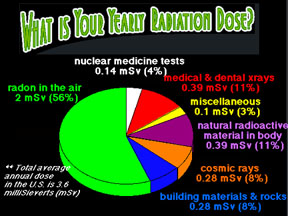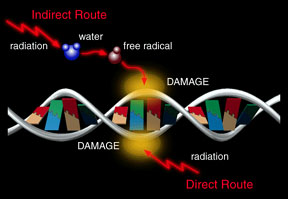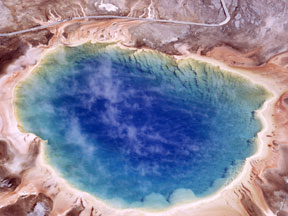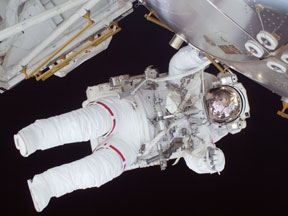Radiation can damage the DNA in the cells of living things. Damaged DNA can make the cell stop working or unable to reproduce. It can also cause the cell to grow out of control, causing cancer.
Click on image for full size
Source unknown.
Radiation is Dangerous to Living Creatures
Radiation can be harmful to living creatures. Radiation can harm living things directly by damaging their cells. The cells might stop functioning, or they might be unable to reproduce. Radiation can also cause cells to reproduce in an out-of-control fashion, causing cancer.
Radiation can also interfere with the reproduction of living things. It can cause sterility, making reproduction impossible. It can also cause mutations in offspring, which are usually detrimental or even fatal.
Animals (including humans) tend to be more susceptible to the harmful effects of radiation than plants. Some types of microbes are tolerant of high doses of radiation that would easily kill multicelled organisms.
Natural sources of radiation play a role in the long-term evolution of species. Some (a very, very tiny fraction) mutations caused by radiation turn out to be beneficial. They give certain organisms a better chance to survive. Sometimes mutations caused by radiation produce a more successful and better-adapted new species.
You might also be interested in:

The text for this level hasn't been written yet. Please check the "Intermediate" or "Advanced" level of this page (click on the bar near the top of this page).
...more
High frequency radiation or fast moving particles plow into a living cell with enough energy to knock electrons free from molecules that make up the cell. These molecules with missing electrons are called
...more
Kingdom Plantae has almost 300,000 different kinds of plants. Plants are found all over planet Earth. They can live in fields, in swamps, in oceans and in the desert. They can live where it is hot and
...more
It is easy for living creatures to survive and grow in some places. Other places make it tough for life to get by. Scientists call places that are hard on life "extreme environments". There is a special
...more
This page describes environments that are filled with acids, are blasted with radiation, are under high pressure, or are tough places for most living things in other ways. It is easy for living creatures
...more
This Windows to the Universe Exploratour examines the scientific evidence of biological evolution. It is available at the intermediate and advanced levels only. To travel through the tour, click the back
...more
Astronauts are exposed to many different types of dangerous radiation in space. Space agencies, like NASA, must carefully monitor the radiation exposure of astronauts to make sure they remain safe and
...more













